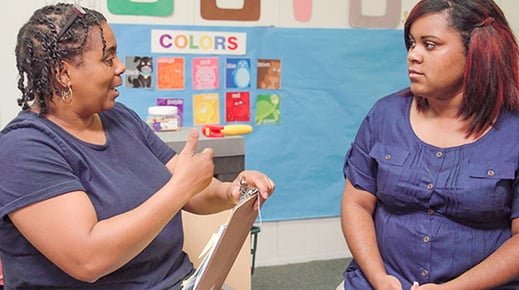
In our earliest implementations, when Teachstone was just being formed, we often heard that teachers were caught off guard by CLASS-based professional development. Trainers were hearing questions like “What am I doing here?” “Why was I asked to attend?” and “How does this relate to my other professional growth activities?” We quickly learned that teachers and professional development providers need to be on the same page about goals. Sometimes goals for teacher-child interactions are set at the program level; sometimes they are set for individual teachers. Either way, everyone needs to be clear on what they are reaching for.
Common wisdom suggests that you should set goals based on a teacher’s ability level. Goals that are too easy aren’t motivating; goals that are too challenging are discouraging. People have long thought that the relationship between goals and motivation to reach those goals looked like this:

In other words, the best goals are well-matched to each teacher—not too easy, not too hard.
But it’s not entirely true! Studies have shown that people are actually more motivated by challenging goals [1] - as long as the goal is attainable, the more challenging it is, the better! The real relationship between goals and motivation looks more like this:

The key is to set a challenging goal, then identify actionable steps to reach the goal. The steps can be matched to the teacher’s level, but the goal should be challenging enough to give him or her something to really stretch for.
More information on how to actually do this - set challenging goals to improve teacher-child interactions - can be found in CLASS Feedback Strategies.
How do you approach goal-setting with teachers? Do you really work to challenge your colleagues? I’d love to hear about it in the comments.
Notes
1. Locke, E. A. & Latham, G. P. (2002). Building a practically useful theory of goal setting and task motivation: A 35-year odyssey. American Psychologist, 57, 705-7.

